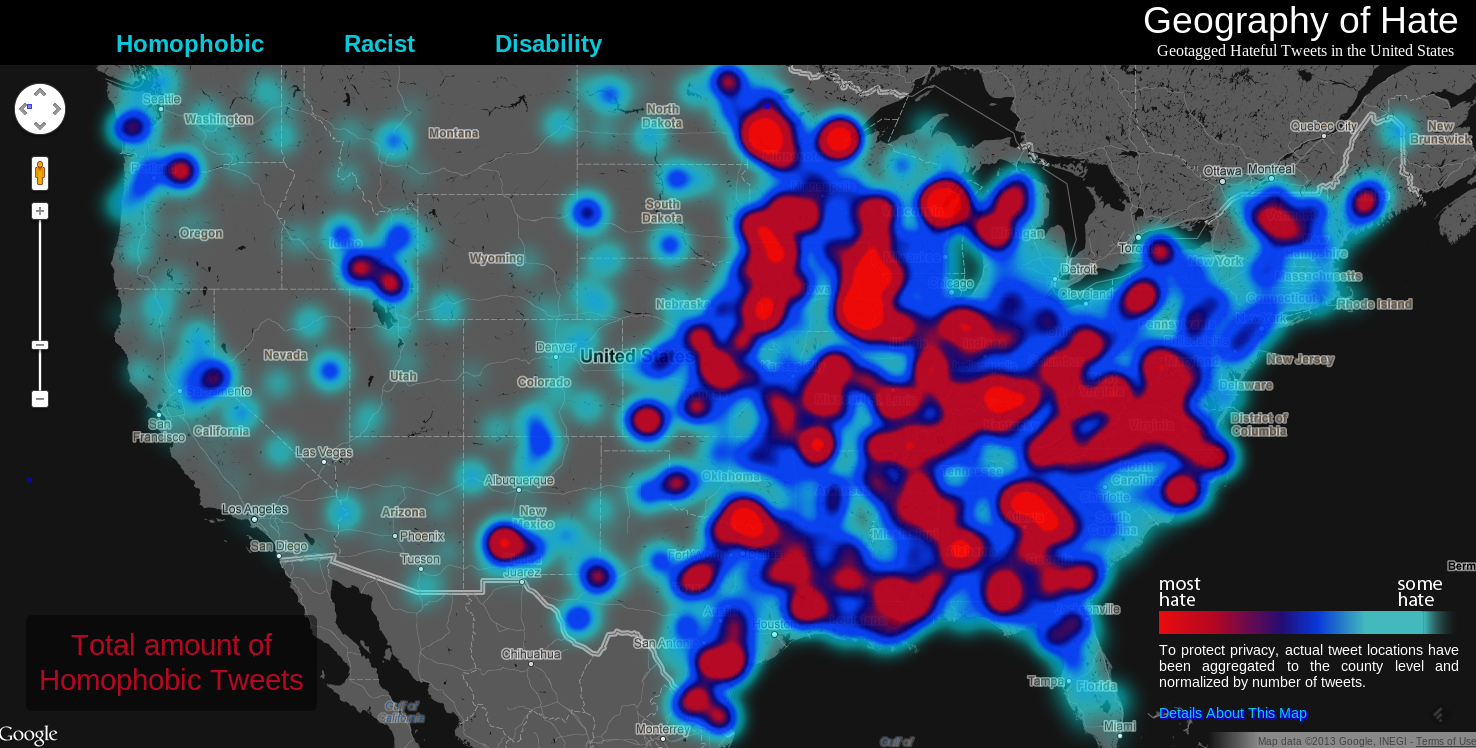Researchers Create “Hate Map” of the U.S. With Twitter Data
Candian researchers have created a “hate map” that splashes a U.S. map with color-coding showing the proportion of all Tweets that contain common hateful words about race, sexual orientation, or disabilities.

The group responsible, based at California’s Humboldt State University, previously faced some criticism for their methodology in mapping racist Tweets concerning President Obama; in that project the researchers identified racist terms algorithmically, meaning the context might sometimes be misconstrued. They say they answered past criticism in part by analyzing tweets by hand to make sure certain words were really used in a derogatory way. In the new study, human readers reviewed 150,000 Tweets in the study sample to confirm the context was derogatory. The results are here.
While the new effort may accurately find hate in Tweets, there are reasons to doubt that the results accurately map hate in the United States. For starters, the concentration of Twitter users is not even across the country, and not all Tweets are geotagged (they only looked at the geotagged ones). Moreover, a lot of Twitter accounts are marketing-based and wouldn’t contain hate words, so those would drown out the signal. Some Twitter accounts are phony. Perhaps most of all, the number of times an individual person Tweets can vary greatly. One guy spewing 1,000 hateful Tweets will make his county look pretty bad.
Overall, the map puts the midwest and southeast in a generally harsh light. By contrast, it says there seems to be very little hate in California, Colorado or Alabama — but lots of it in angry red splashes such as one between Davenport and Iowa City, Iowa. My skepticism is tempered by the unbroken corridor in light blue (denoting “some hate”) generally along the New Jersey Turnpike. When I’m stuck there I don’t like my fellow man either.
To make up your own mind, read more about the methodology here.
Keep Reading
Most Popular
Large language models can do jaw-dropping things. But nobody knows exactly why.
And that's a problem. Figuring it out is one of the biggest scientific puzzles of our time and a crucial step towards controlling more powerful future models.
How scientists traced a mysterious covid case back to six toilets
When wastewater surveillance turns into a hunt for a single infected individual, the ethics get tricky.
The problem with plug-in hybrids? Their drivers.
Plug-in hybrids are often sold as a transition to EVs, but new data from Europe shows we’re still underestimating the emissions they produce.
Google DeepMind’s new generative model makes Super Mario–like games from scratch
Genie learns how to control games by watching hours and hours of video. It could help train next-gen robots too.
Stay connected
Get the latest updates from
MIT Technology Review
Discover special offers, top stories, upcoming events, and more.